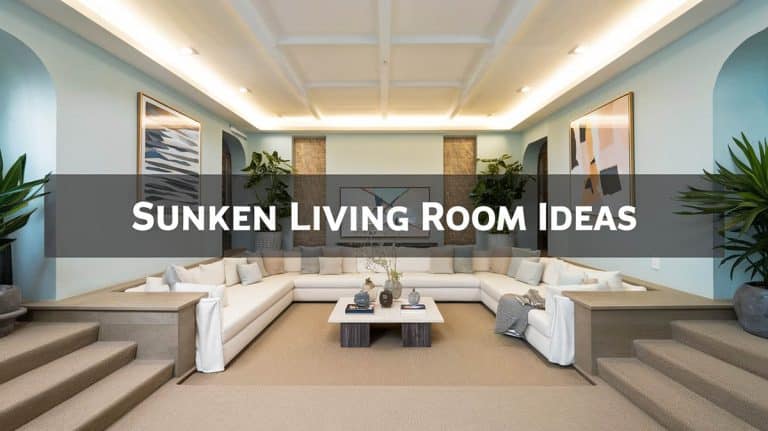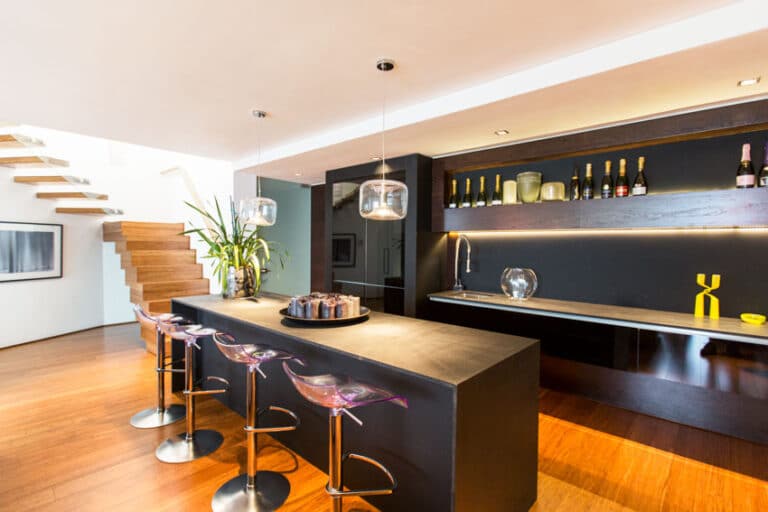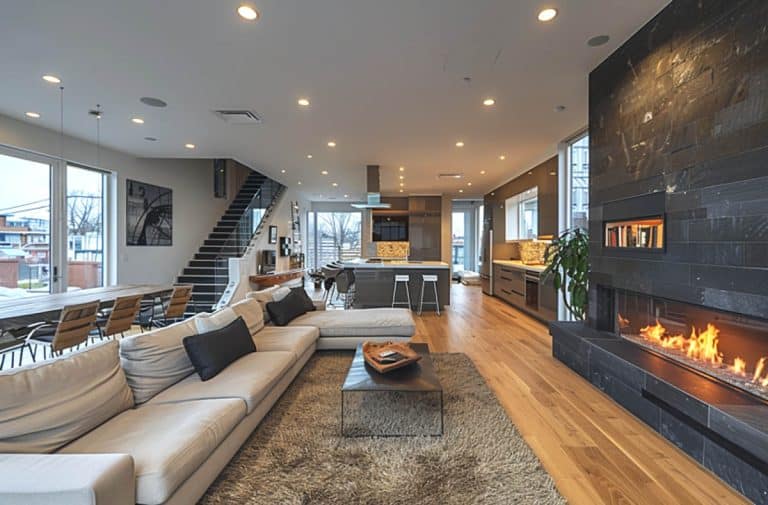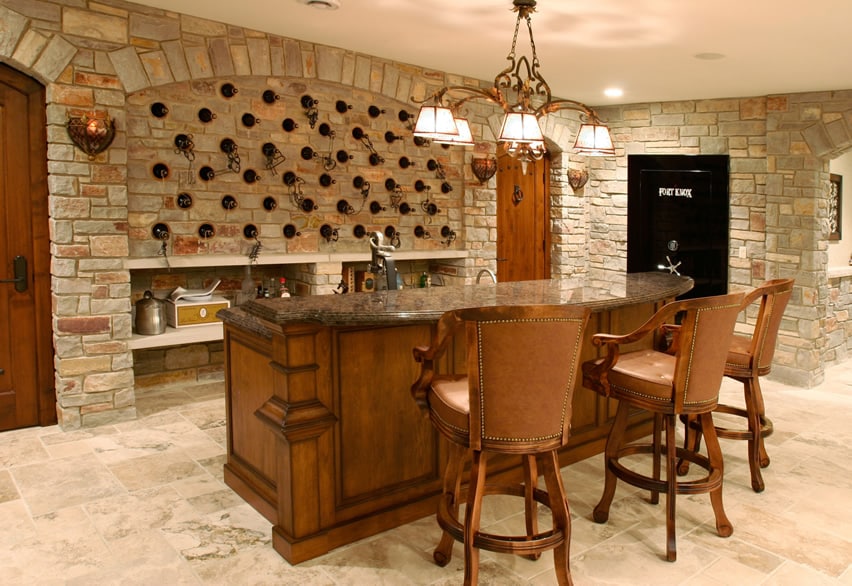How to Choose an Accent Wall in the Living Room
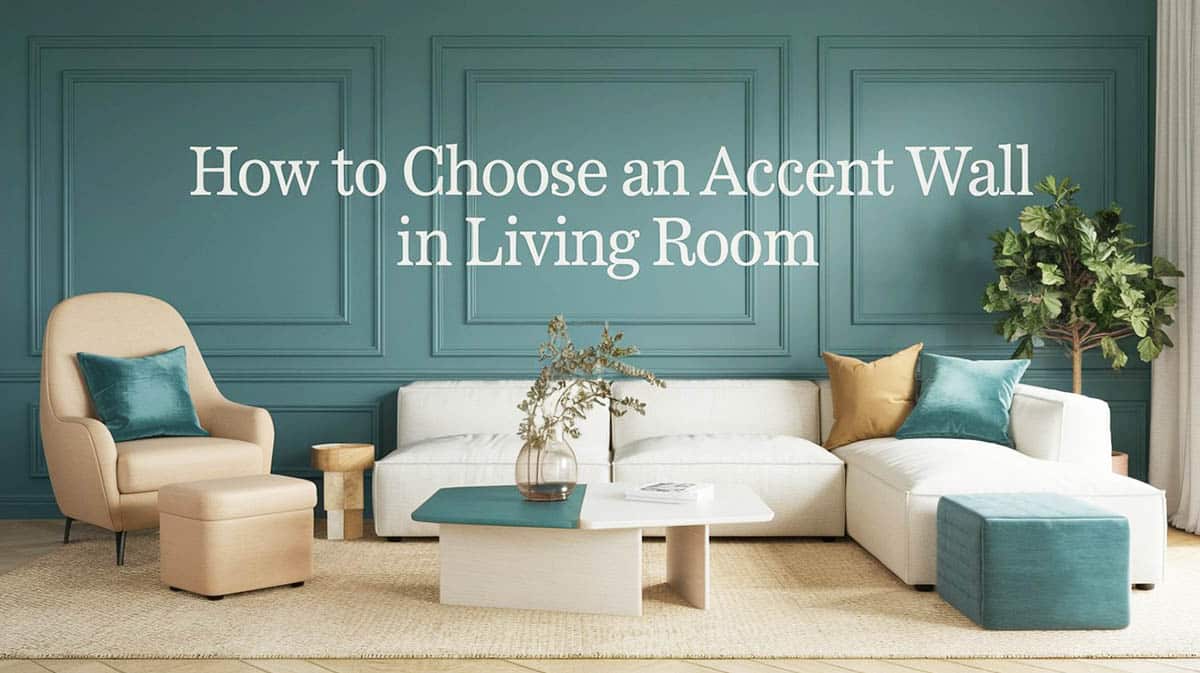
An Accent wall is set off from the rest of the walls in a room, giving it a specific look that often creates an attractive focal point. An accent wall can be created by painting the wall a different color, wallpapering it, or using a raised surface material such as stone, brick, draperies, or other materials. Accent walls are still popular in many homes and allow homeowners to express their personal style and design preferences. One of the hardest parts of creating an accent wall is figuring out which wall to choose. In this guide, we will discuss how to choose an accent wall in a living room, so it will add an extra layer of panache for you and your guests to enjoy.
How an Accent Wall Improves a Room
Accent walls add variety, depth, and dimension to a room. The living room is typically the main room in a home where you entertain guests and family. An accent wall allows you to create a focal point and refresh your living room style without completely changing the room, and it can make a living room appear larger or smaller.
It may also become an area of visual interest or a complement to furniture or window treatments. Accent walls improve a room when they work with the rest of the décor and colors to bring cohesiveness and interest.
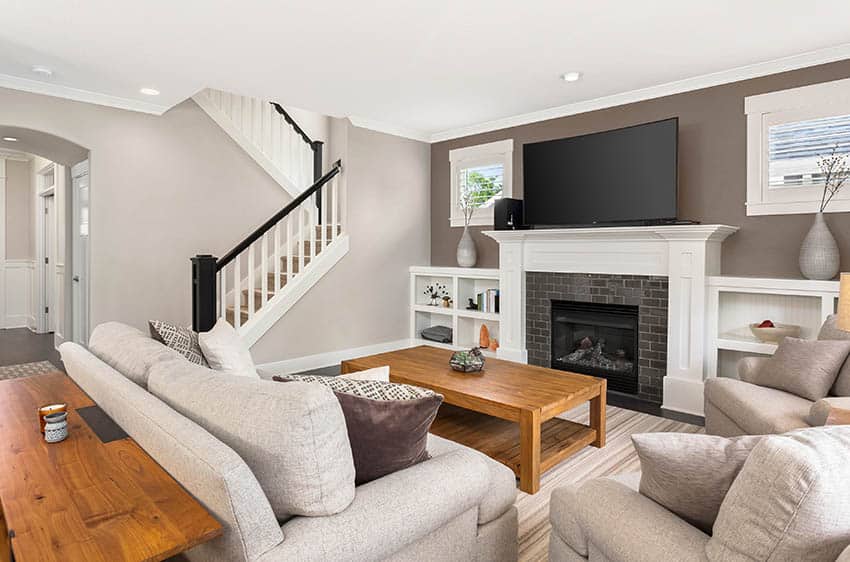
What to Consider When Choosing a Focal Wall in Your Living Room
Several options make a wall a good choice for an accent wall. The following list of characteristics will help you choose a wall in your living room to paint or cover with a choice of materials or décor.
Does the wall have an architectural feature?
If one of the walls in a living room has a cathedral ceiling slope, an irregular geometric shape, or is a rounded wall, painting it a different color or several shades lighter or darker from the rest of the living room adds subtle dimension.

Are there windows in the living room?
If one wall of the living room has multiple windows, a different accent wall color can highlight the view and give the windows an artistic feel. Be careful not to choose a too dark color, as it may accentuate the light from the windows too much.
A fireplace is a perfect reason for an accent wall
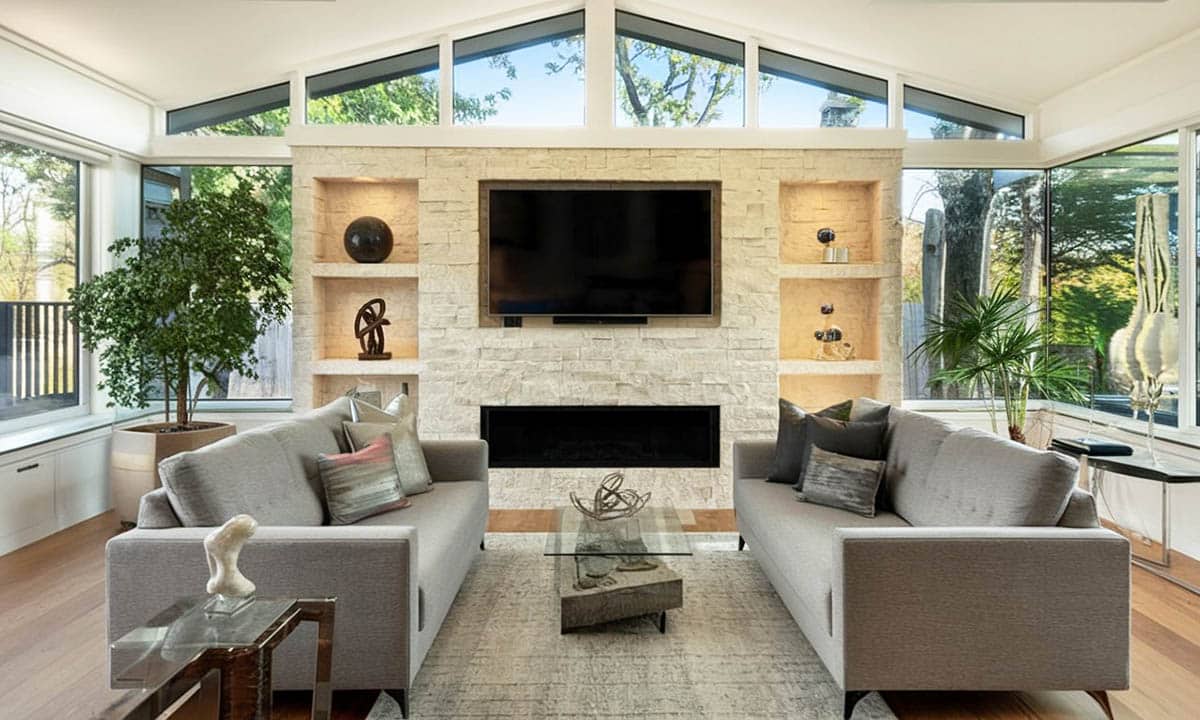
The fireplace style, whether rustic, colonial, or modern, allows a great opportunity to create an accent wall. Painting the wall is great, but covering the entire wall with a natural finish, such as stone, brick, clapboard, or stucco, gives the fireplace a thematic look.
What wall does your eyes gravitate to?
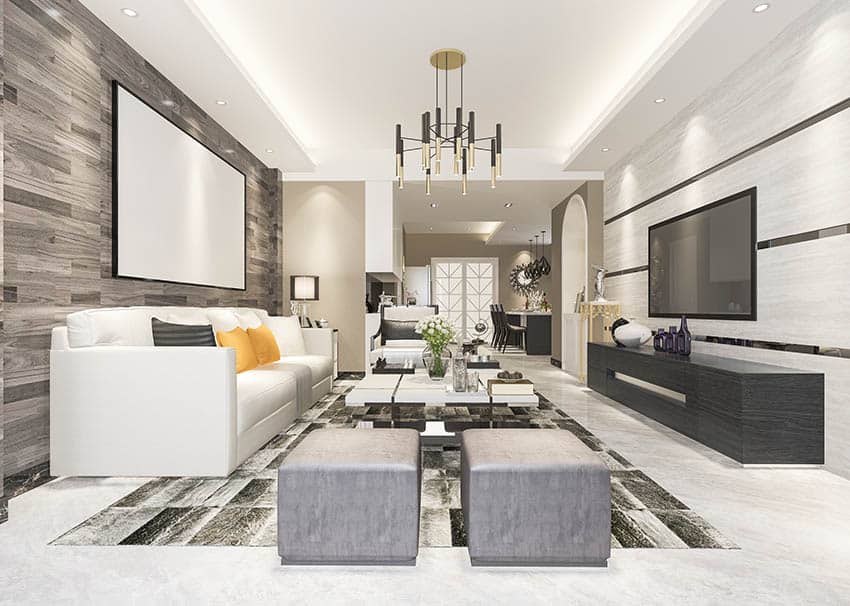
The wall that catches your eye first when walking into a living room makes a great choice for an accent wall. Creating a gallery of framed art or adding multiple shelves, staggered and covering the entire wall, to display collectibles makes an accent wall that doubles as a display piece.
Pick a wall that brings balance
If a living room is long and rectangular, painting an accent wall at the end of the room, the shorter wall, balances the awkward length of the side walls. A warm color brings a wall closer so painting the back wall darker visually squares off the room. If the living room is a rectangle, with a back and front wall that’s longer, painting one or both a lighter color pushes the wall out, reducing the appearance of it being thin.
Where does the wall start and end?
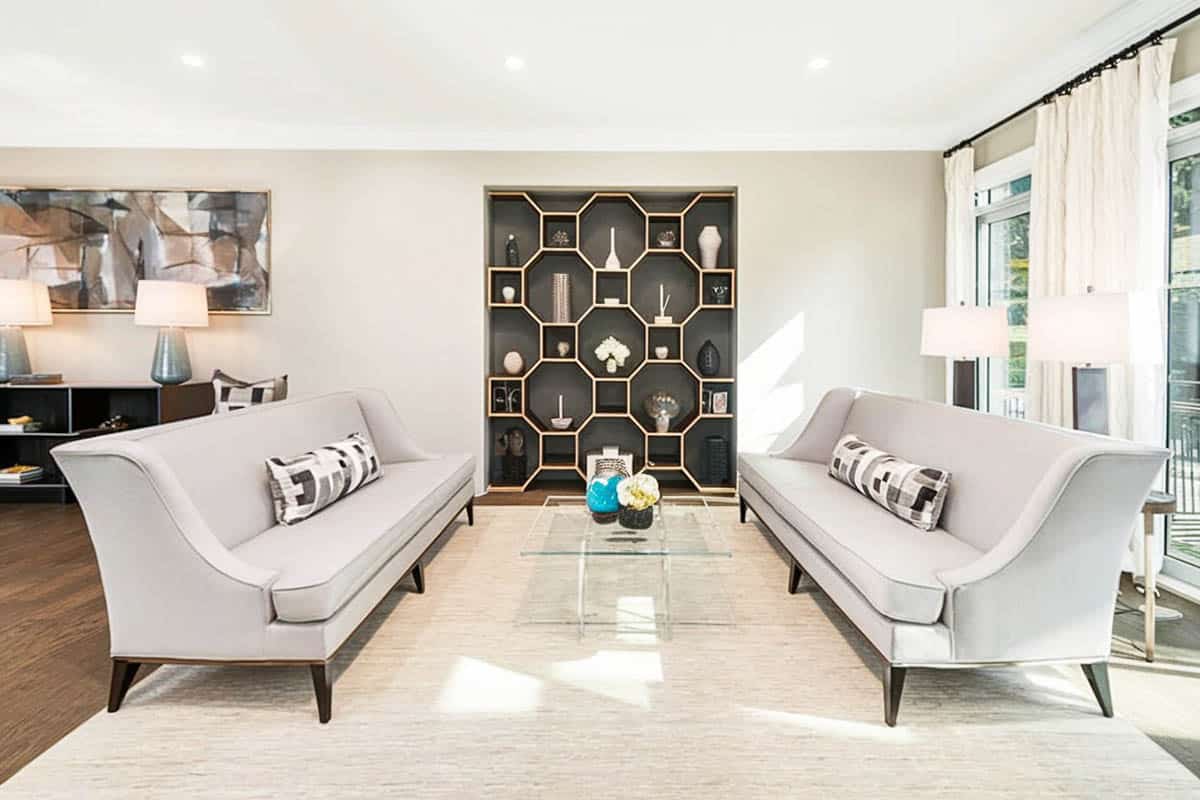
Living room with black accent wall niche
If a living room wall extends into a dining room or kitchen, it’s not a good choice for an accent wall, as one end will have no definitive cutoff point. The same is true for a wall with a 45-degree angle that connects to another area or room.
What sits up against the wall?
A wall with a couch, grand piano, or short bookshelves makes a great accent wall to draw attention to the piece of furniture or a conversation piece. A wall with taller furniture, such as a high bookshelf or cabinet, may not make a great accent wall because the furniture hides most of the wall’s surface.
Once you’ve examined your living room and decided which wall is best as an accent wall, there are no specific décor rules regarding what you do with it. Keep in mind that the wall you choose can end up being a misfit, looking as if it doesn’t go with the room, or it can create a conversation piece. These accent wall ideas are a simple way to add impressive style without changing the entire living room.

